It further was developed to serve as a nuclear strike aircraft and a tactical reconnaissance aircraft.
By all accounts, it proved to be the perfect plane for the job.
As a result, there was less need for escort fighters, and the high-speed Voodoo evolved accordingly.
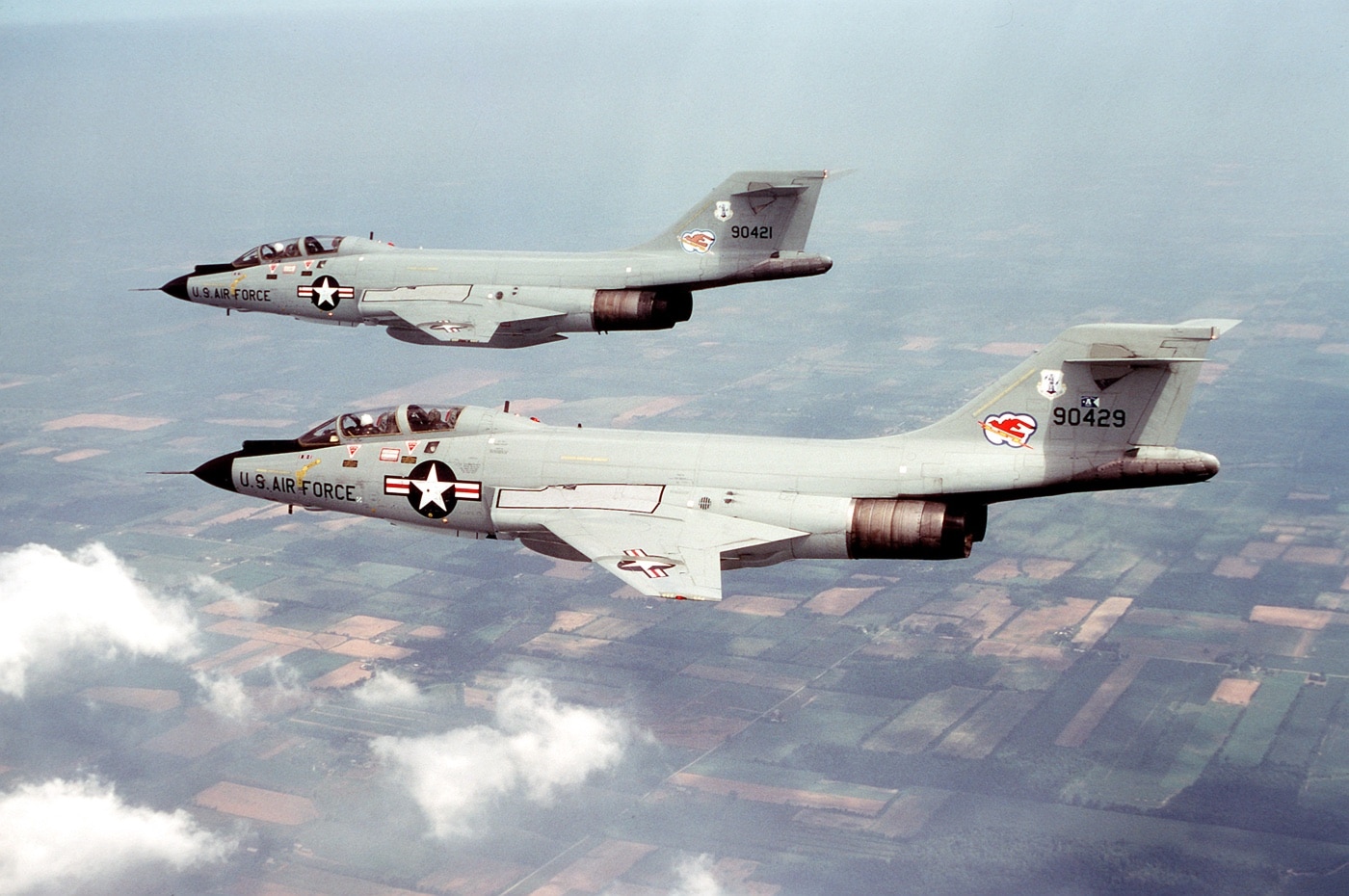
Two F-101B Voodoo aircraft in flight near Niagara Falls during exercise Sentry Castle ’81. The aircraft were assigned to the 136th Fighter Interceptor Squadron, New York Air National Guard. Image: NARA
Production of the F-101A moved forward, with the first Voodoo entering service in May 1957.
They flew it in just three hours and seven minutes, while averaging 781.74 miles per hour.
Truly Black Magic
Instead of escorting bombers, the Voodoo took on a fighter-bomber role.
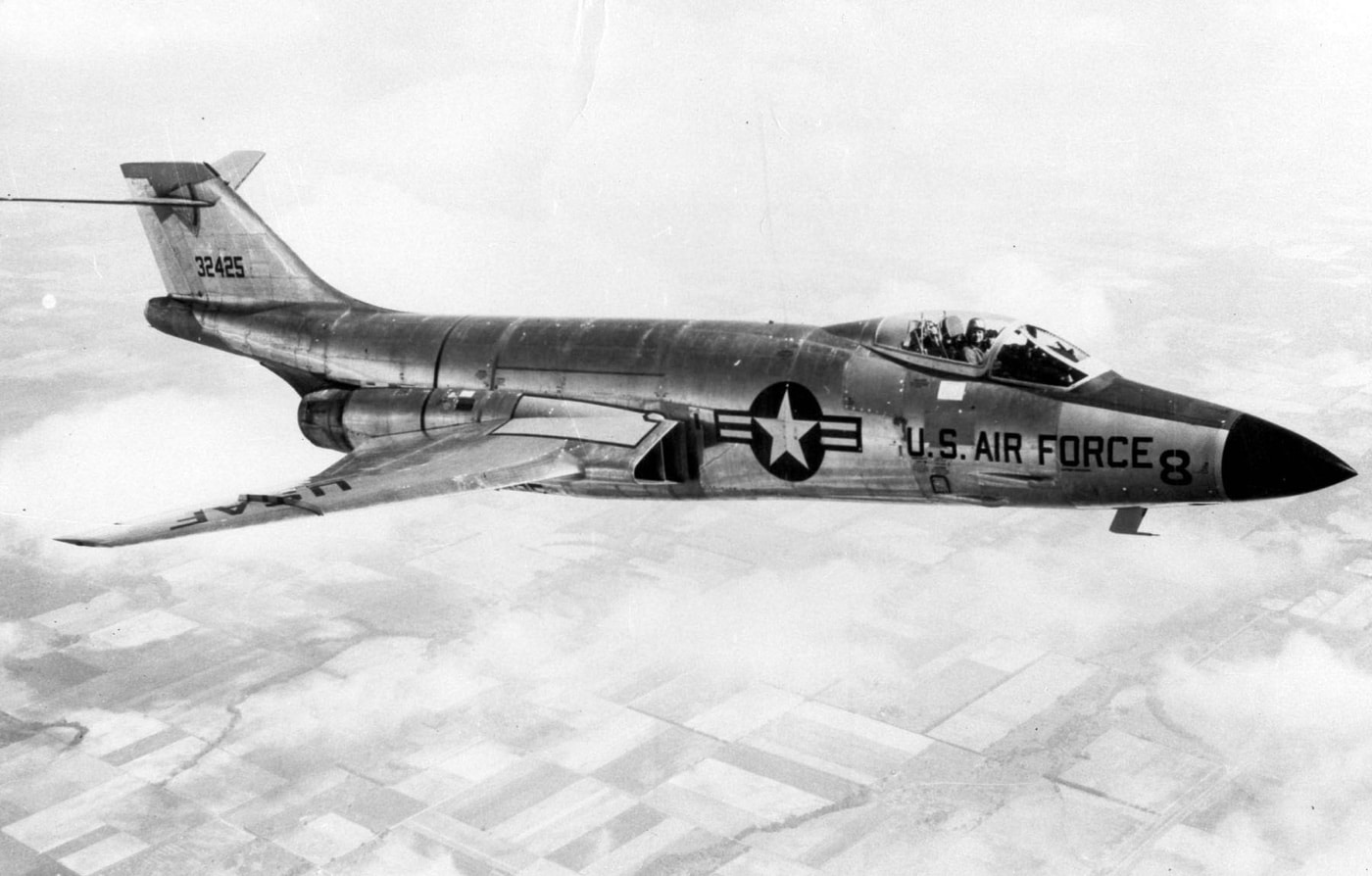
A single-seat McDonnell F-101A in a training flight from Bergstrom Air Force Base, Texas. Image: U.S. Air Force
Because of the modifications required, the first of the two-seaters didnt arrive until January 1959.
The aircraft later served in Southeast Asia with the 45th Tactical Reconnaissance Squadron.
In Foreign Service
The United States Air Force wasnt the only operator of the Voodoo.
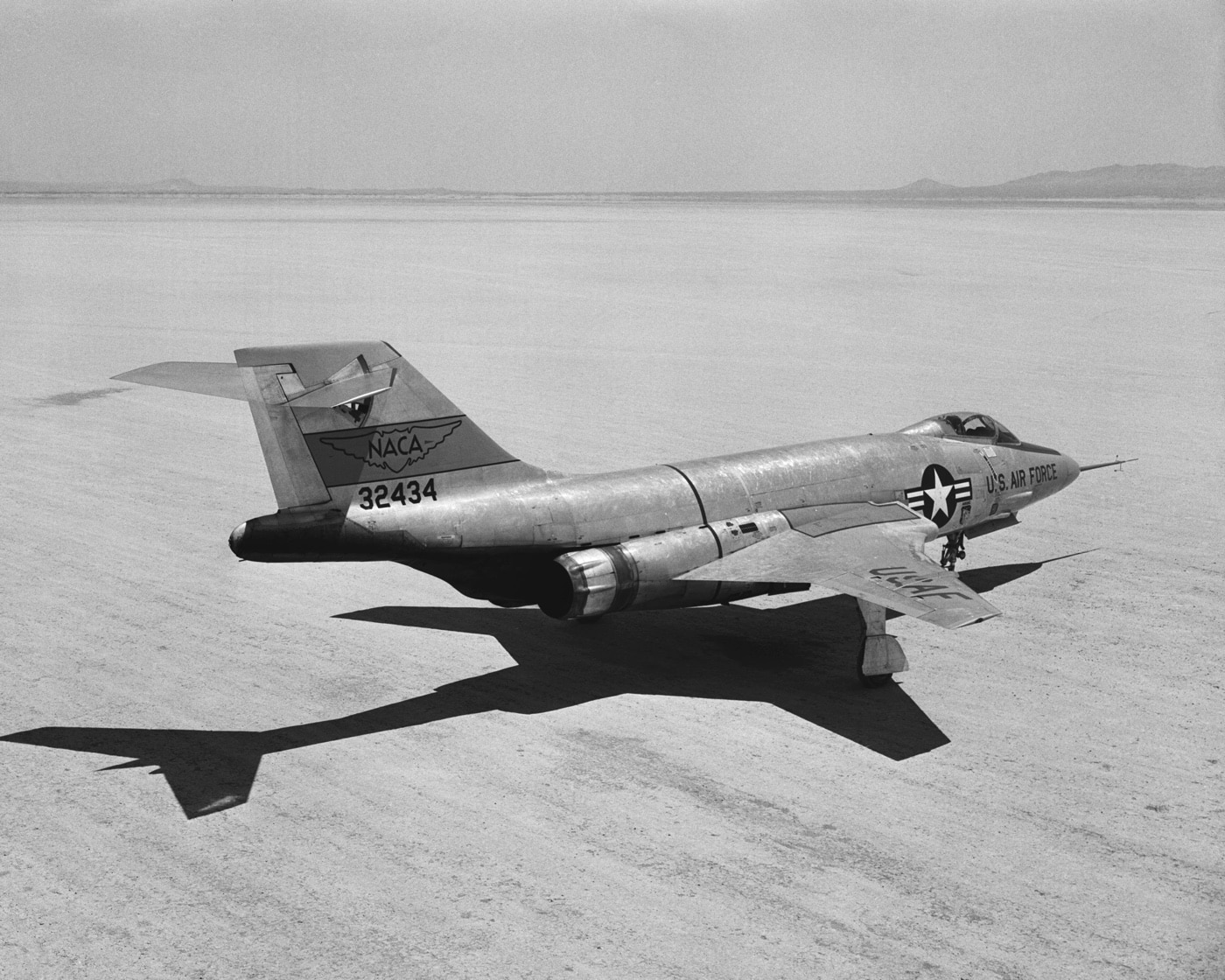
In 1956, this F-101 Voodoo prototype underwent testing by the United States Air Force and the National Advisory Committee for Aeronautics (NACA). NACA was the predecessor of NASA. Image: NARA
Both Canada and the Republic of China used the F-101.
The Royal Canadian Air Force (RCAF) operated the aircraft into the late 1980s.
Three of the aircraft that conducted the surveillance missions over mainland China are also in museums in Taiwan.

Another view of the F-101 Voodoo prototype during testing. This would lead to the F-101A fighter that entered service a year later. Image: NARA
These aircraft serve as a reminder of the magic that was the F-101 Voodoo.
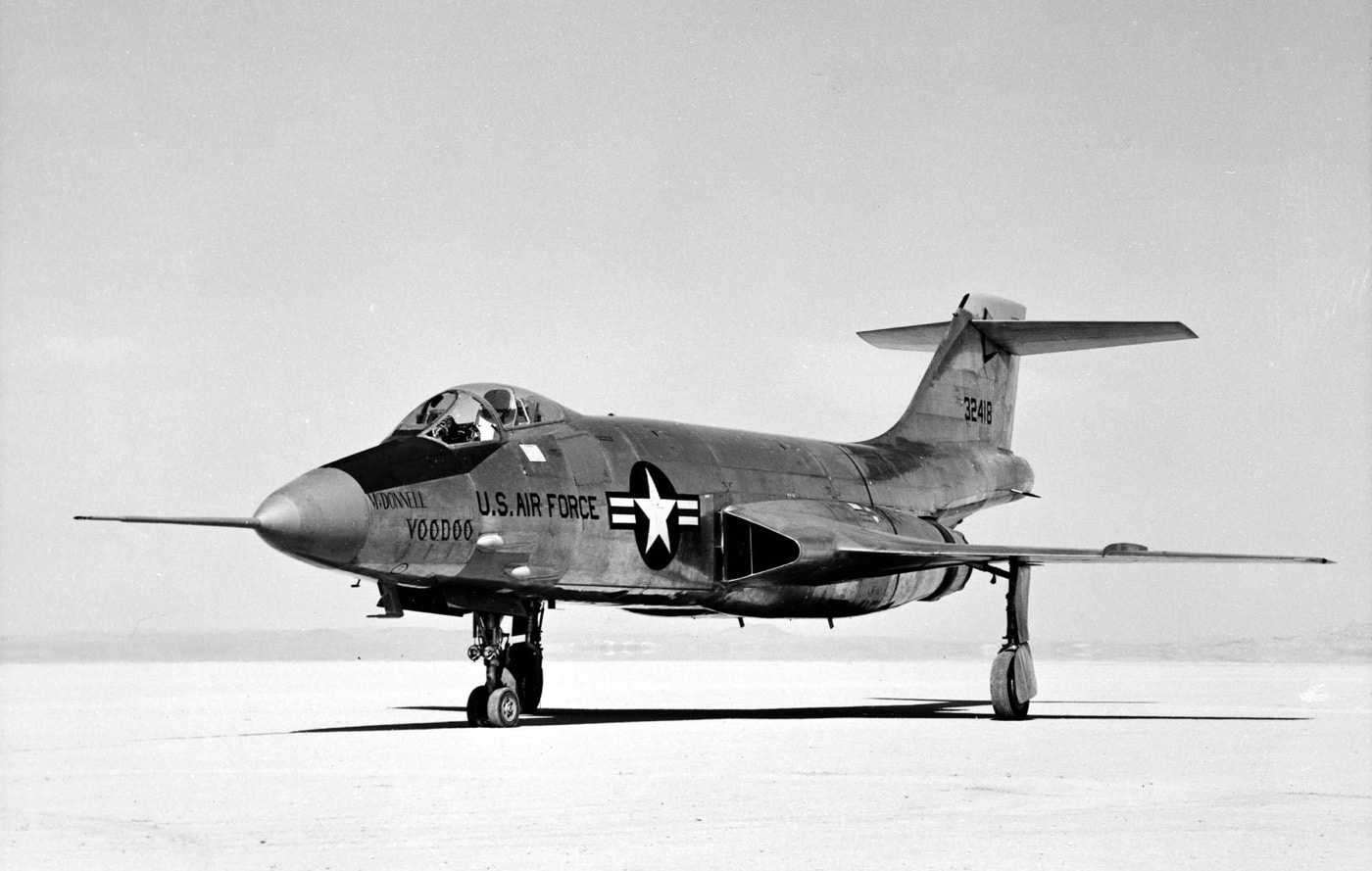
Shown here is the first production McDonnell F-101A Voodoo fighter (S/N 53-2418) at Edwards Air Force Base, Calif. Image: U.S. Air Force
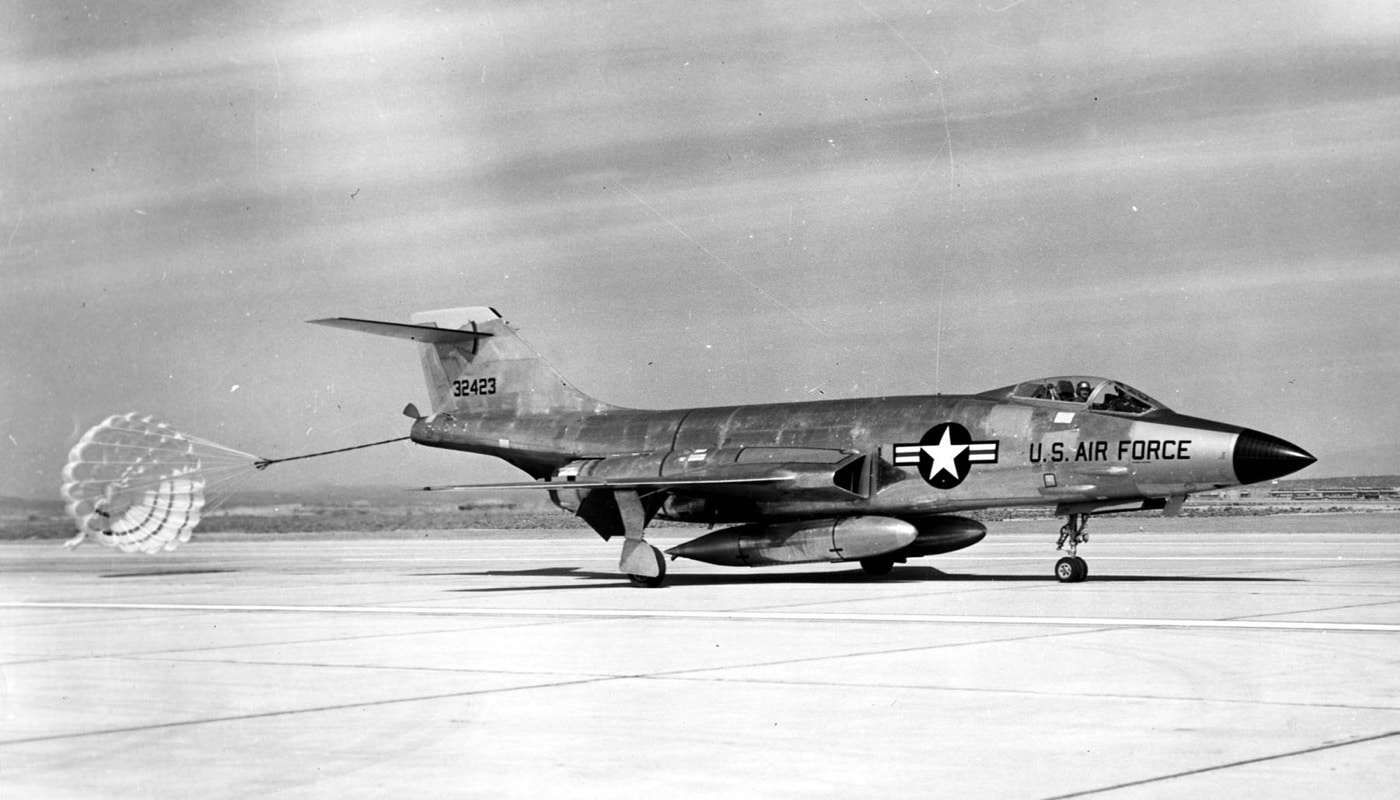
F-101A Voodoo during landing. The fighters used a drag chute to help slow the aircraft during landing. Image: U.S. Air Force
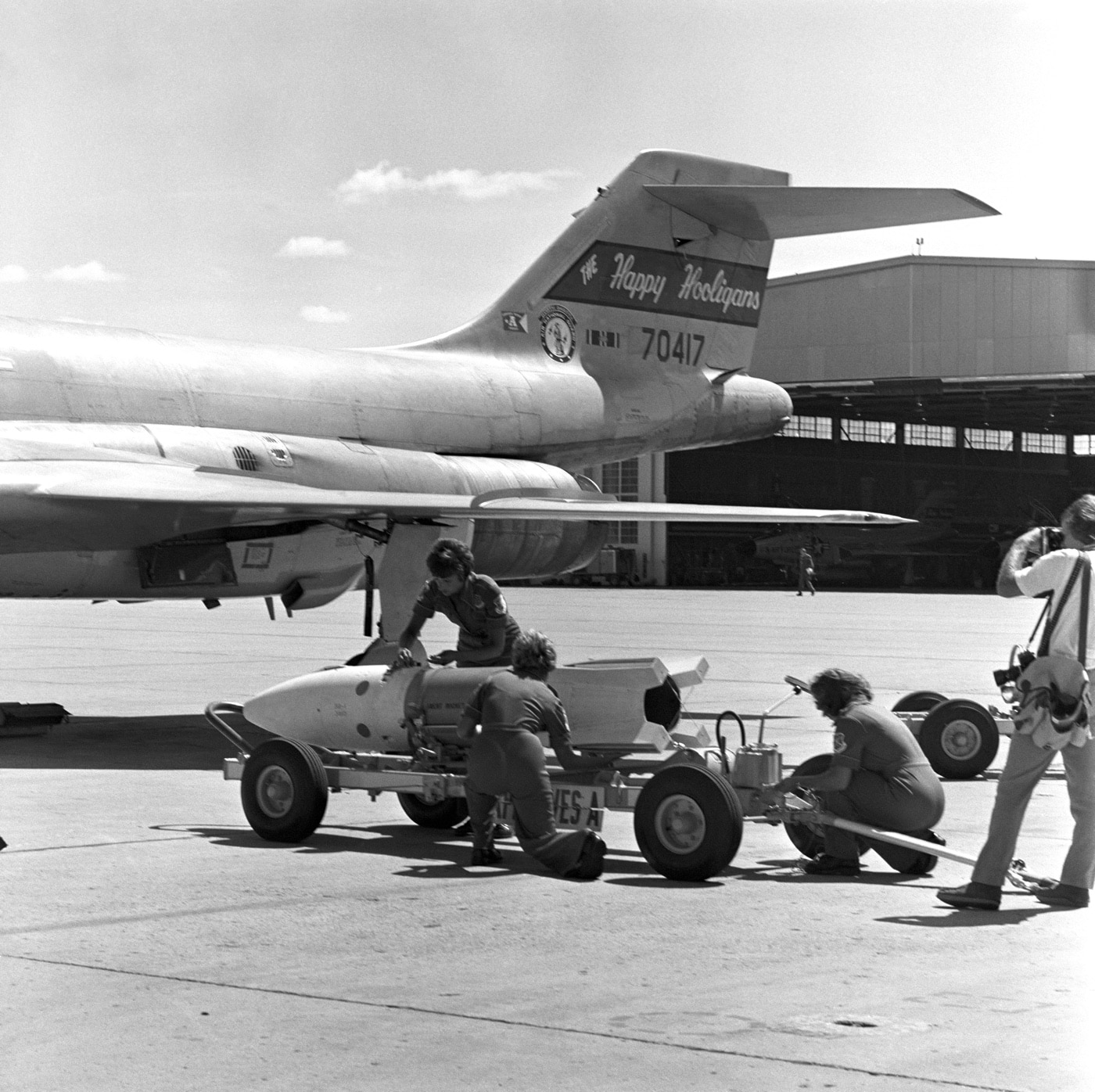
U.S. Air Force weapons handlers practice weapons loading onto a F-101 at Hector International Field, North Dakota, for the upcoming competition. Image: U.S. Air Force
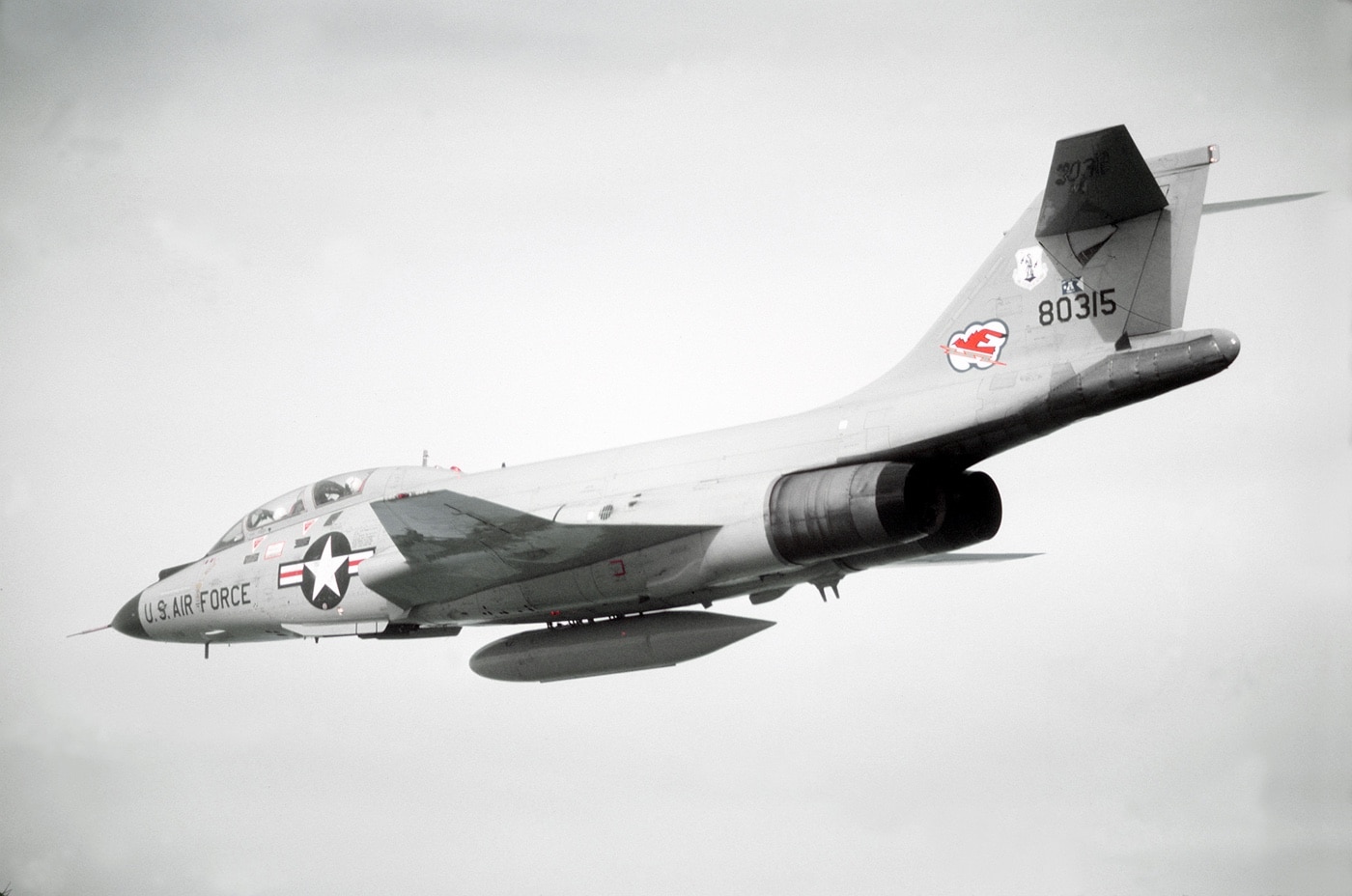
A left rear view of an F-101 Voodoo aircraft in flight. The aircraft was assigned to the 107th Fighter Interceptor Group, New York ANG, North American Air Defense Command (NORAD) Image: NARA
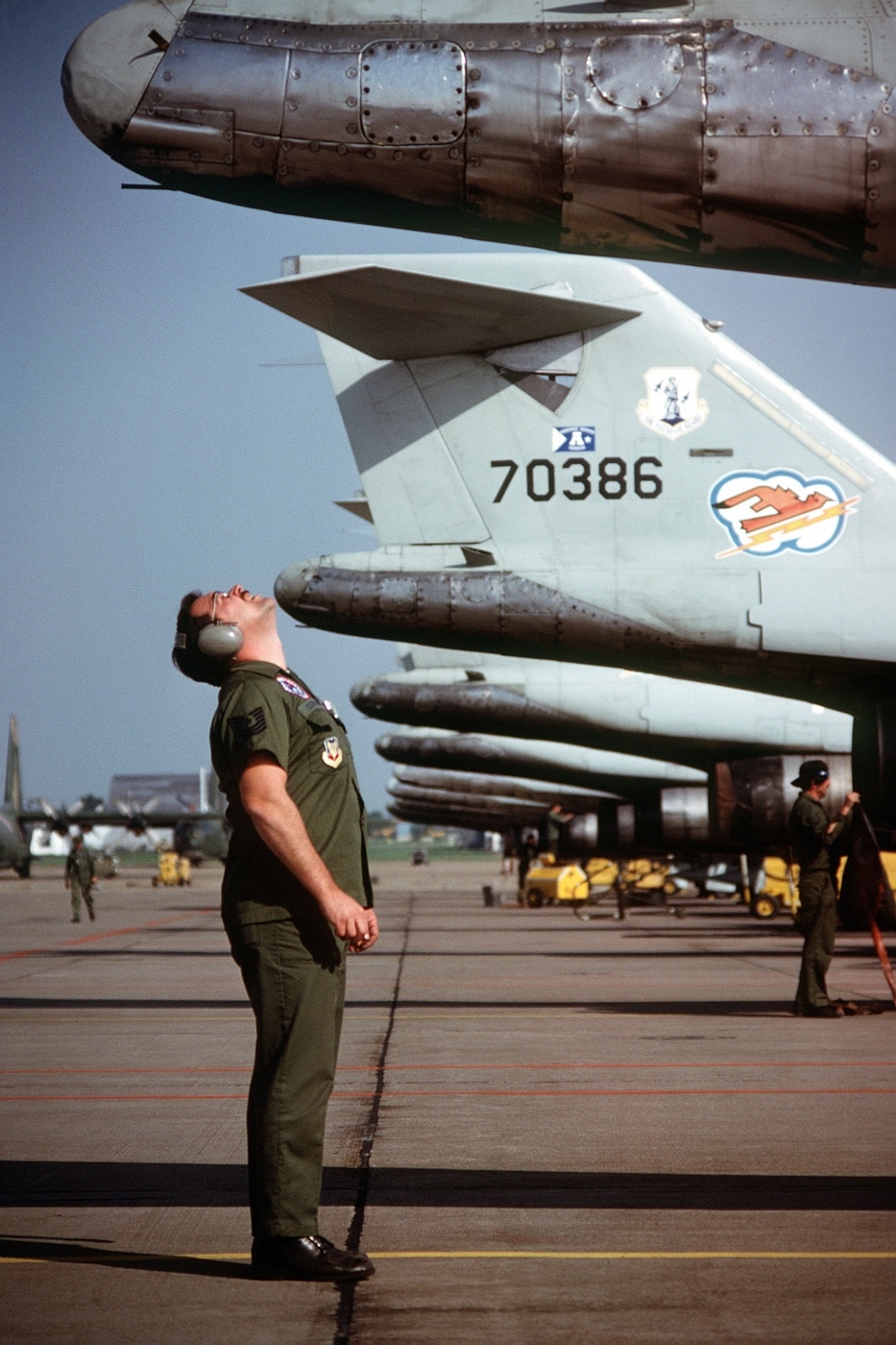
A master sergeant performs a preflight check of the tail section of an F-101B Voodoo aircraft. Image: NARA
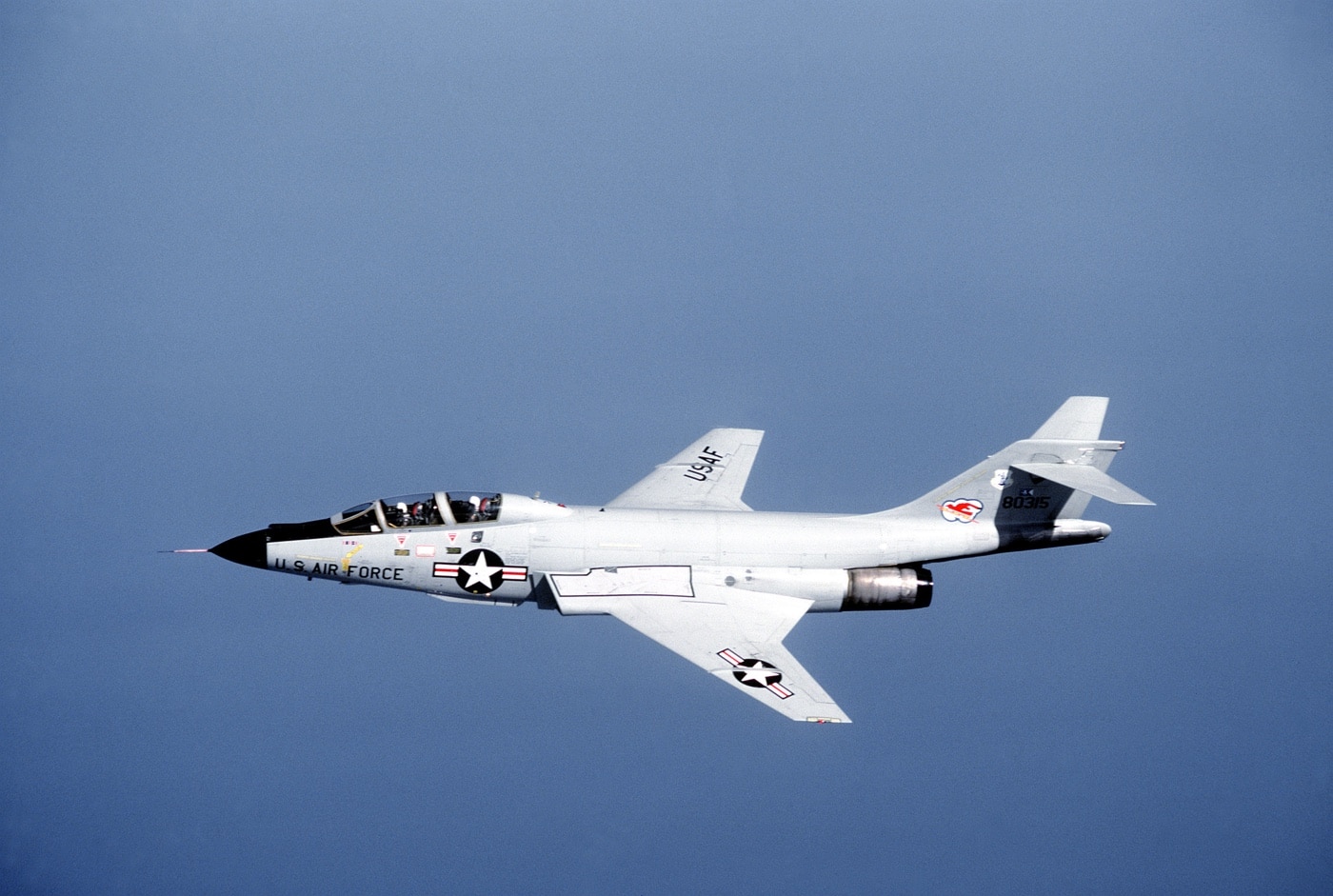
A left side view of an F-101B Voodoo aircraft banking to the left in flight. This plane was part of a North American defensive flight in January 1978. Image: NARA
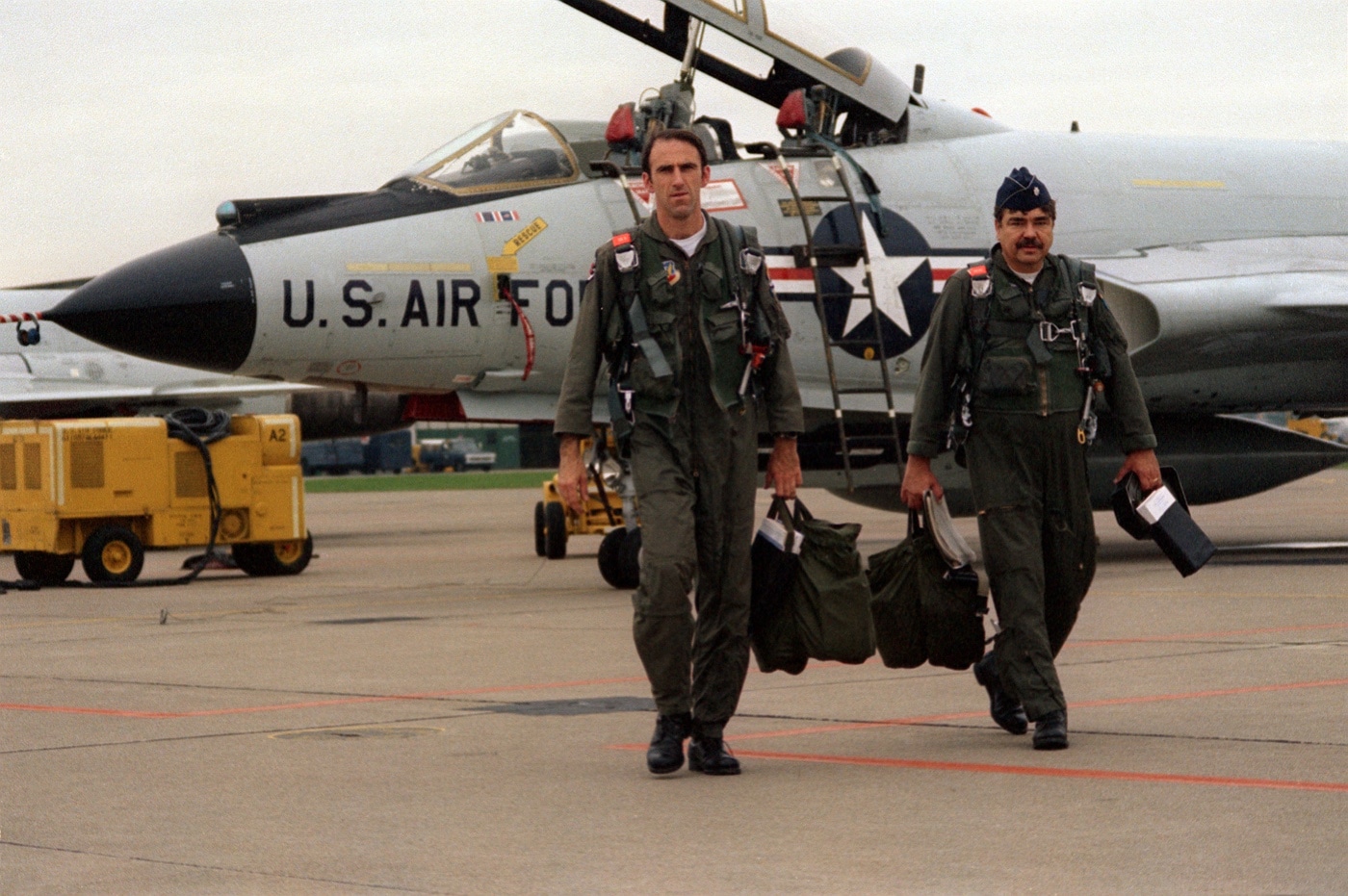
A F-101B Voodoo aircraft crew leave their aircraft after a mission protecting United States airspace in the early 1980s. Image: NARA
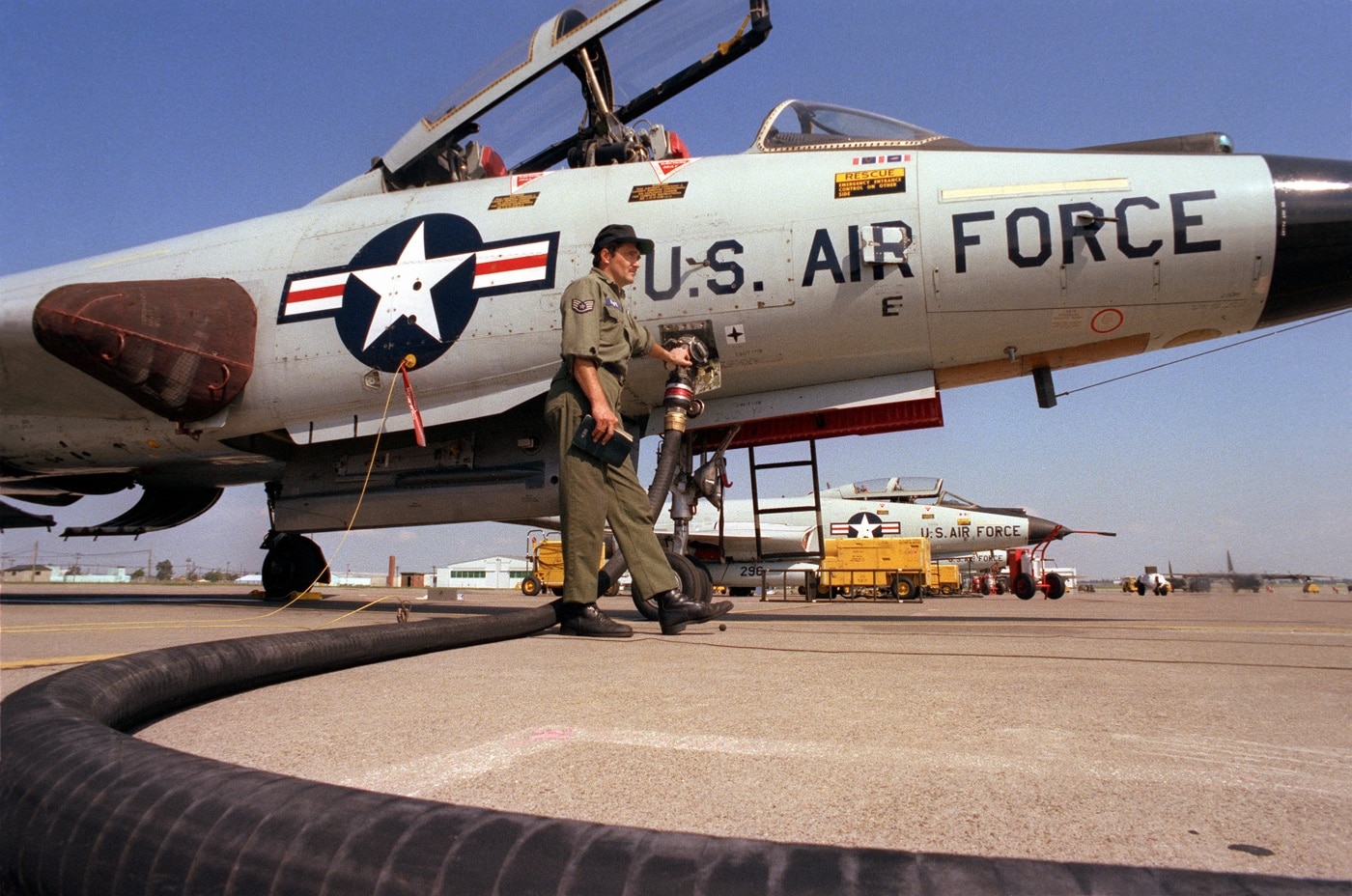
A U.S. Air Force staff sergeant refuels an F-101B Voodoo aircraft from a fuel truck. Other F-101 fighters are in the background. Image: NARA
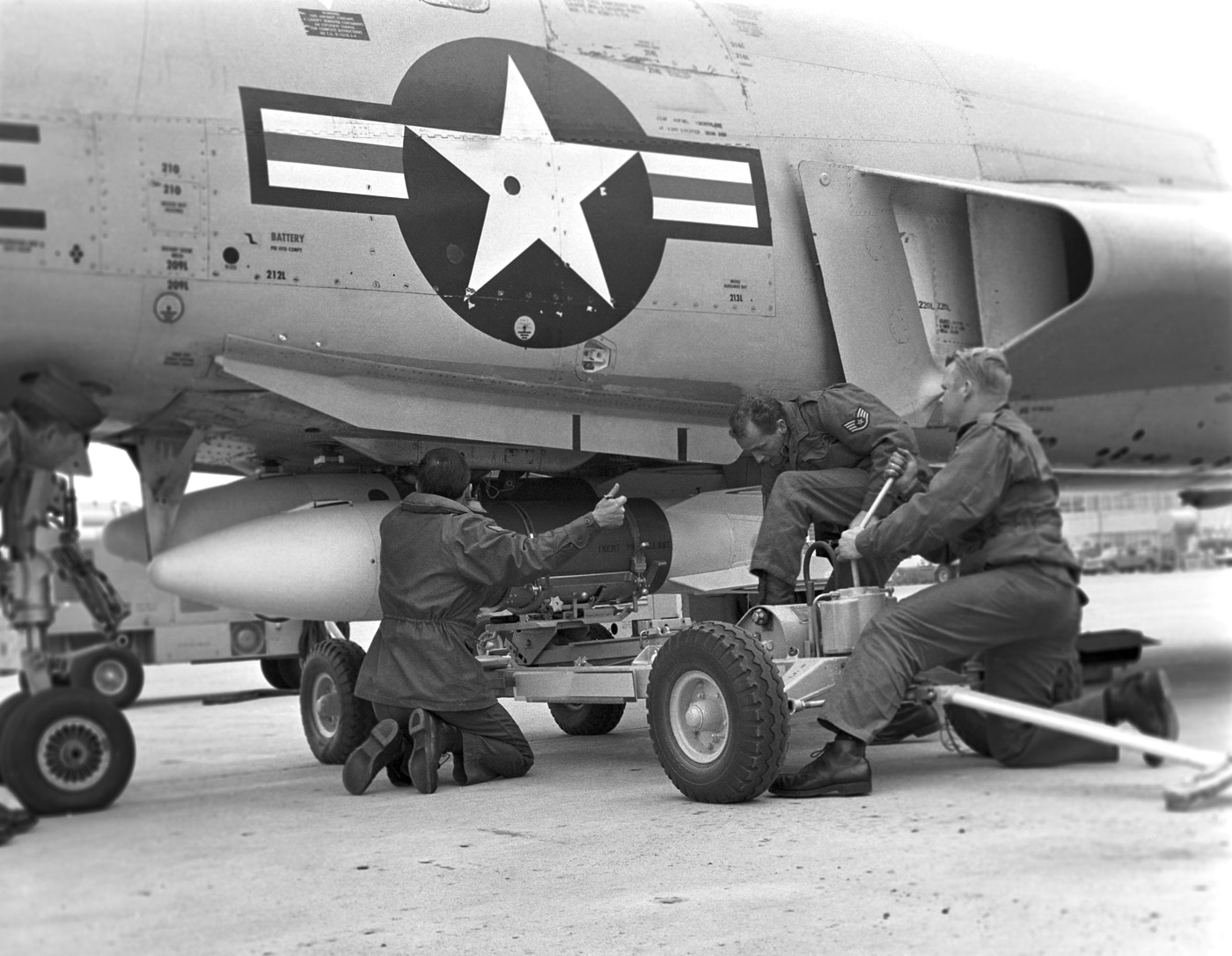
A U.S. Air Force crew loads training weapons onto a F-101B Voodoo aircraft during the “William Tell” Weapons Competition at Tyndall, Air Force Base, Florida. Image: U.S. Air Force
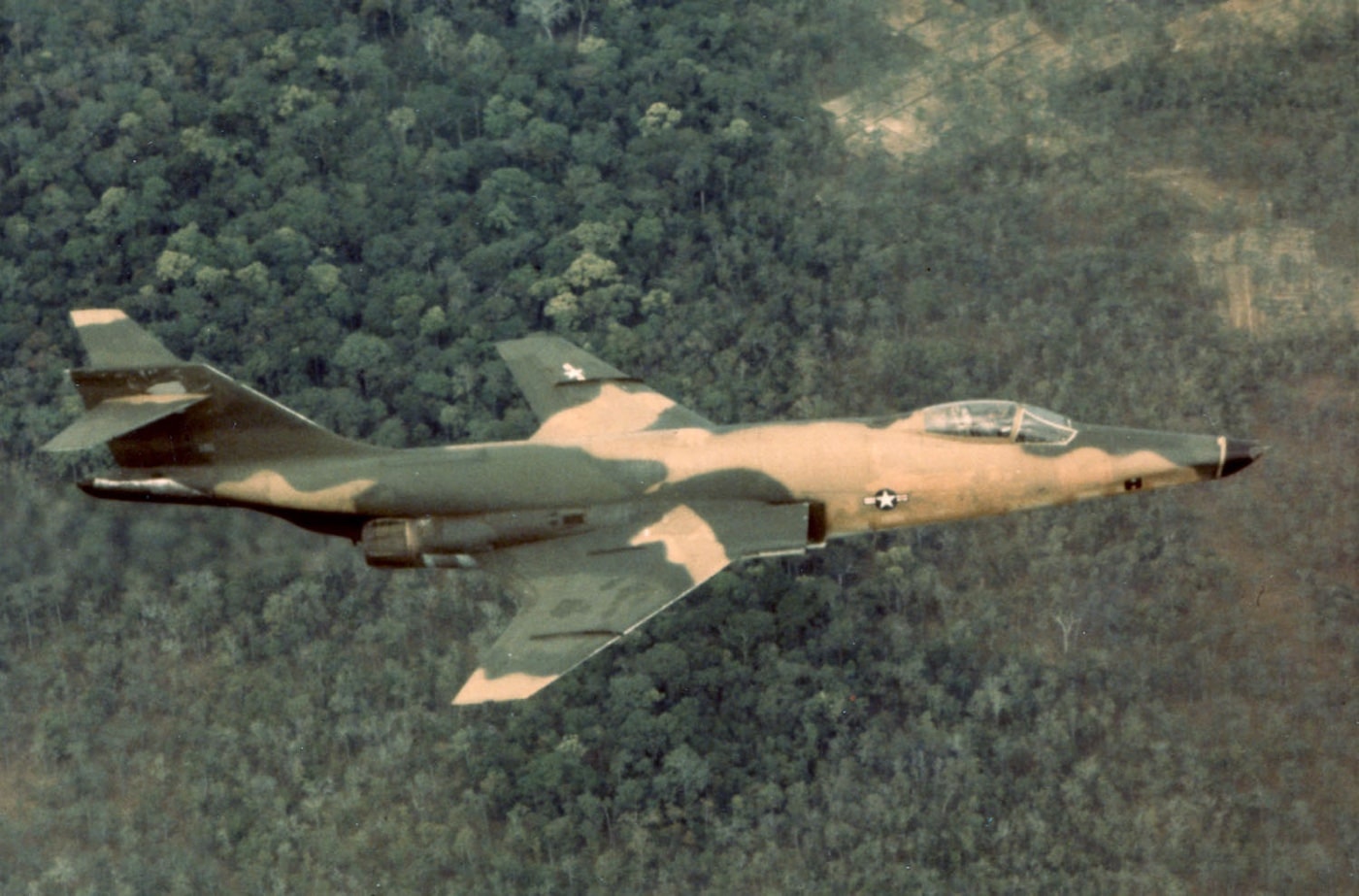
This McDonnell RF-101C is shown in flight during a photo reconnaissance mission over Vietnam in May 1967. Image: U.S. Air Force
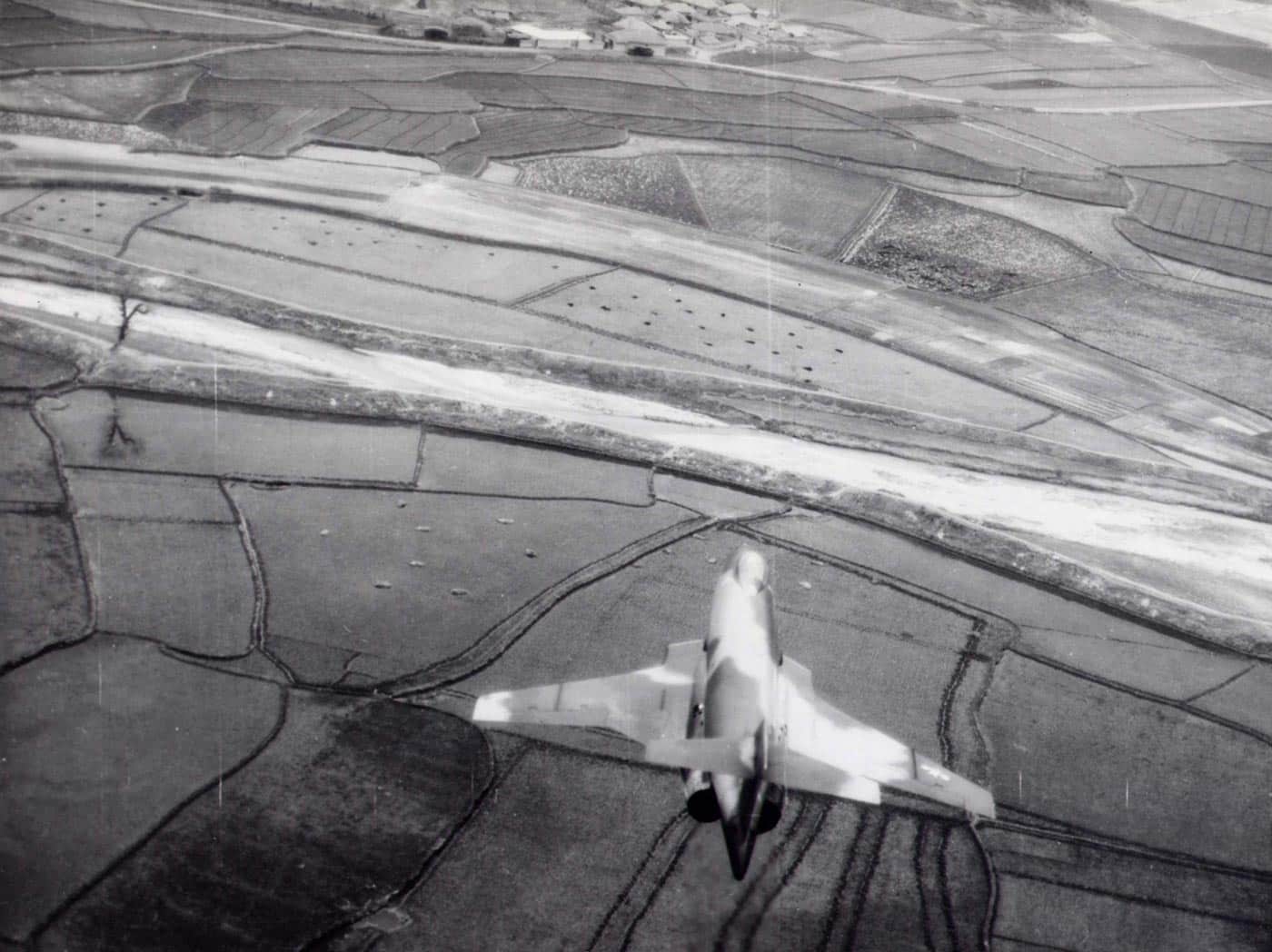
During the Spring of 1969, a Kentucky Air National Guard RF-101 Voodoo makes a reconnaissance run during training in South Korea. Image: Kentucky National Guard
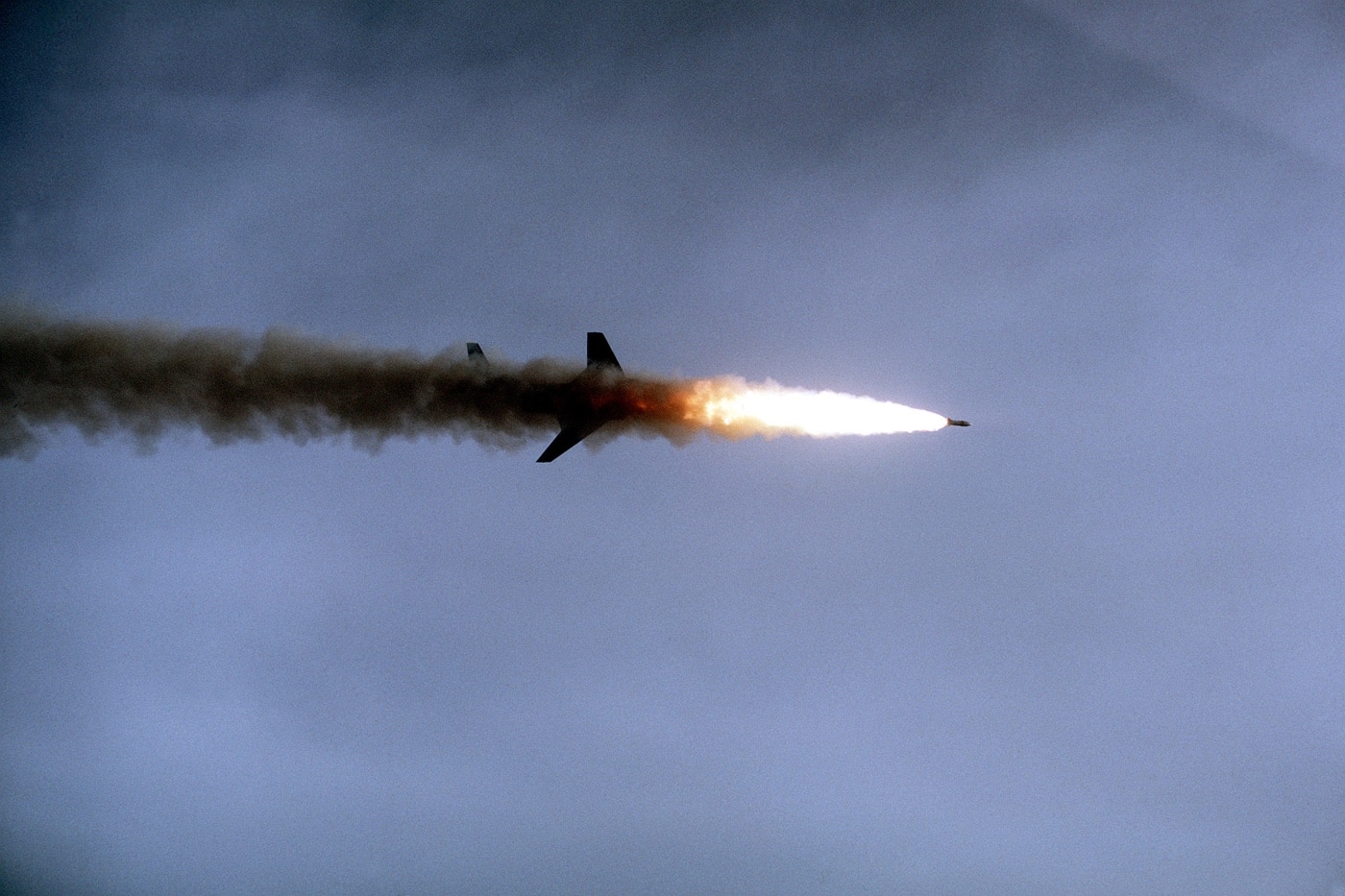
A Canadian Air Force CF-101 Voodoo aircraft fires a missile during the combat training exercise William Tell ’82. Image: TSGT Frank Garzelnick/U.S. Air Force
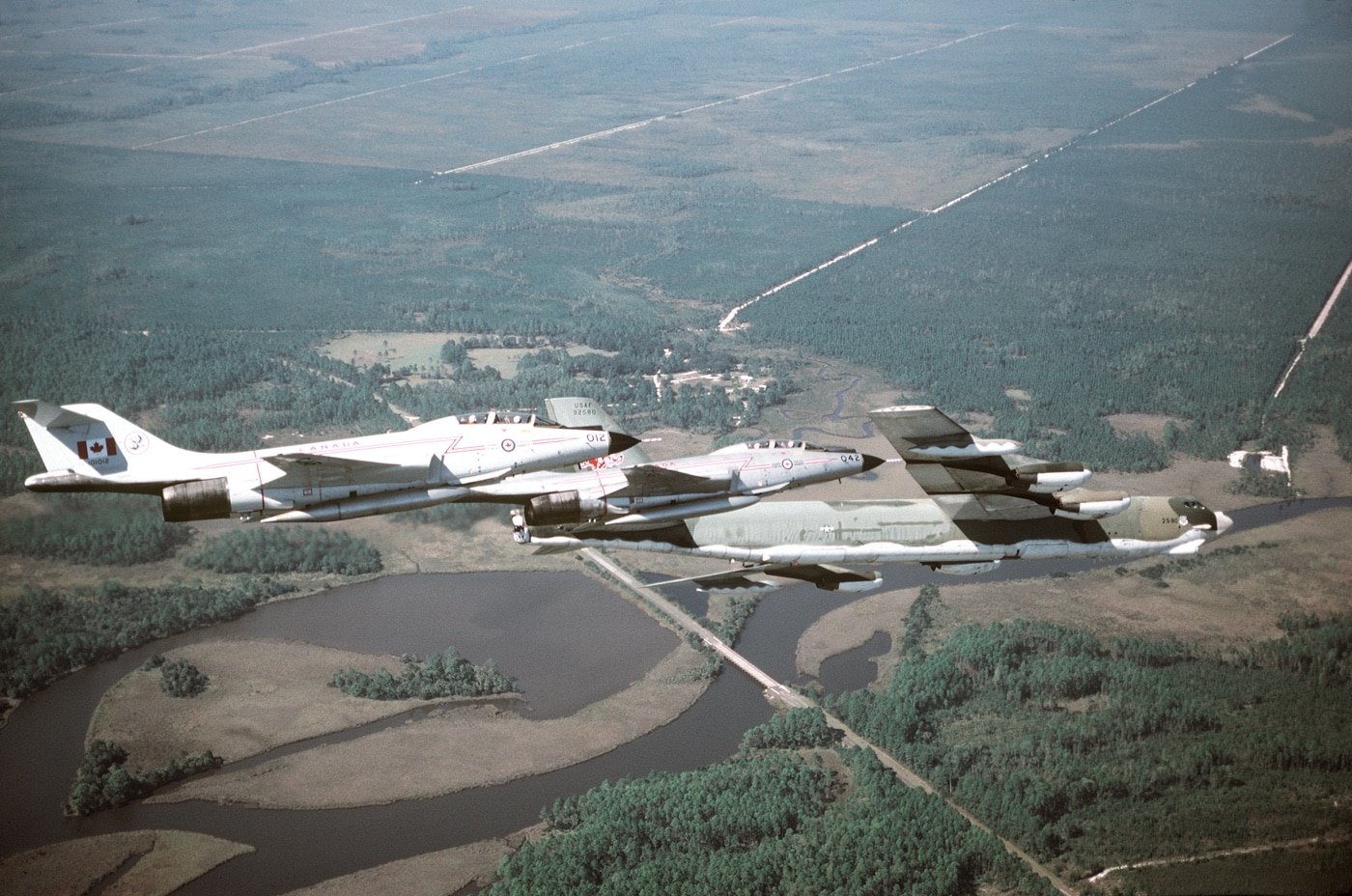
A pair of Canadian Air Force F-101 Voodoo aircraft intercept a U.S. Air Force B-52 Stratofortress bomber during combat training exercise William Tell ’80. Image: NARA

F-101B Voodoo aircraft of the New York Air National Guard in flight over Niagara Falls during exercise Sentry Castle ’81. Image: NARA




